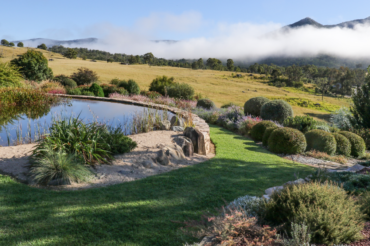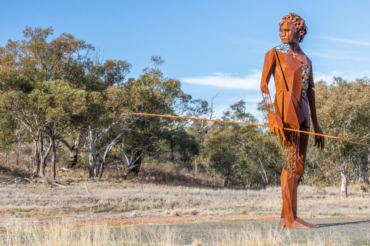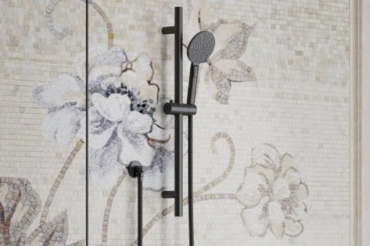
Challenging conditions and a family tragedy have played roles in the garden Jay and Sue Walker have established around their Queensland homestead.
The paddocks may be unseasonably green thanks to recent rain on Sue and James (Jay) Walker’s Cumberland station near Barcaldine in central-western Queensland, but the memory of the drought that ravaged the district for almost nine years is impossible to erase.
“The older you get, the harder it becomes,” Sue says of the loss of so many plants in the garden she and Jay have worked to established in the 48 years since they moved to the family property. “We worked hard to keep water up to the trees and the more established eastern side of the homestead garden, but we still lost a lot. When you’ve been through 10 or 11 droughts, as we have, you do begin to think you can’t take any more.”

In fact, the Walkers have drawn a line in the black soil that has nurtured the family’s famous Santa Gertrudis stud since 1953 when Jay’s father, Sir James Walker, imported bloodstock from King Ranch in Texas, USA, and produced Australia’s first classified graded-up, pure-bred Santa Gertrudis bull in 1959. As the drought dragged on, they moved their cattle to agistment in South Australia for two years until, with no rain on the horizon, they took the heart-breaking decision to sell all their livestock. Now they’ve passed the ownership baton to their daughter, Jayde, and her husband, Ben Chandler, who are making the most of the good season by hosting agisted stock on Cumberland. (For more about the Chandlers, who live on the other side of Barcaldine, see their story on page 34.)
“The good season means it’s a great time for Jayde and Ben to have taken over,” Jay says. “So many times, you think the landscape will never recover, but it does. You just have to be very, very patient.”
The Walkers’ tenacity was further tested when the bore that had supplied water from the Great Artesian Basin since 1892 crashed. “It was mid-summer and we were desperate,” Jay explains. “The temperature was in the mid-40s for days on end and when the bore couldn’t be fixed, we had to sink a new one.”

The silver lining was that the new bore supplies all the station and the garden’s needs. “The ph is between seven and eight,” Jay says. “That’s supposed to be perfect for gardens. If anything, I’d say it’s better than the old bore.”
When Jay and Sue arrived as newlyweds, they inherited a small yard with a couple of “paddock trees” — a well-established coolabah and twin vine trees on the western side of the homestead and a few rose bushes the previous manager’s wife had nurtured. “We were so busy working and raising our daughters that we didn’t pay much attention to the garden,” Sue says. “That all changed when we lost our daughter, Meagan, to cystic fibrosis at the age of 23.”
Meagan was a student teacher at the time and had done her prac work at the school in the small township of Ilfracombe about 60 kilometres from her home station. “She loved gardens and roses and we decided to establish a garden in her honour,” Sue explains. “She was much-loved and we were overwhelmed with the community support we received in building a memorial.
“The then owners of the Ilfracombe nursery brought in soil and donated lots of plants and many others gave us plants. A local earthmoving contractor said he’d like to contribute, so he excavated the pond and Jay built the waterfall.”

From there, and in spite of many setbacks including extremes of droughts, searingly hot summers and frosty winters, the Walkers’ homestead garden has grown to its present two acres (almost a hectare). On the western side, there’s a firepit under the towering coolabah, which Sue describes as the “eternal flame of winter”, where the family congregates most evenings and beside that there’s an orchard filled with citrus, figs, blueberries and a passionfruit vine that has found its sweet spot and is delivering so much fruit the Walkers are considering establishing a roadside stall. There’s also a relatively new bed with a giant pear sculpture surrounded by chrysanthemums and rose bushes, part of a mission to grow 65 roses, the symbolic plant for cystic fibrosis, which earned the moniker when a four-year-old sufferer misheard the pronunciation of his condition.
Meagan’s garden is a peaceful raised lawn area bordered by massed plantings of mother-in-law’s tongue on one side and duranta on the other with a memorial stone at the entry. The pond with its water irises, lilies, rock water feature and windmill is another restful spot, and other seats have been positioned at strategic points throughout the garden. Not that Jay and Sue spend much time sitting around admiring their handiwork. “Sue is the size of a mini minor, but she has a V8/D8 engine,” Jay says. Sue adds that Jay is just as committed to the garden, pointing out that in summer he has been caught in the middle of the night tapping down paving stones to take advantage of the brief respite from the heat. “It stops the arteries hardening,” he observes.

The Walkers planted an avenue of black box and ironbarks as a windbreak on the eastern boundary and, during the drought, they established a native garden in what was previously “a nothing corner”. There are two stone quarries on Cumberland and Jay describes the flagstone paving and numerous rock features throughout the garden as the product of “free stone and labour” — his own.
Another recent addition has been a tropical section with Burdekin plums, cedar, jacaranda, African mahogany and neem trees providing essential shade for the understorey groundcovers, shrubs and other plants.
“Plantings are all trial and error,” Sue says. “You put in plants that shouldn’t grow and they do, and then other things that you think should be fine struggle. I put in a heap of evergreen frangipanis but they all developed rust and aren’t doing well. Bougainvilleas and oleanders thrive, but for some reason the Cuban royal palms aren’t doing well.”
The garden and its water features are magnets for birds of many varieties. “There’s one willy wagtail that follows Jay wherever he’s working,” Sue says. “Our grandchildren call it Meagan because she’s always by his side.” ac
Photography by Ken Brass









